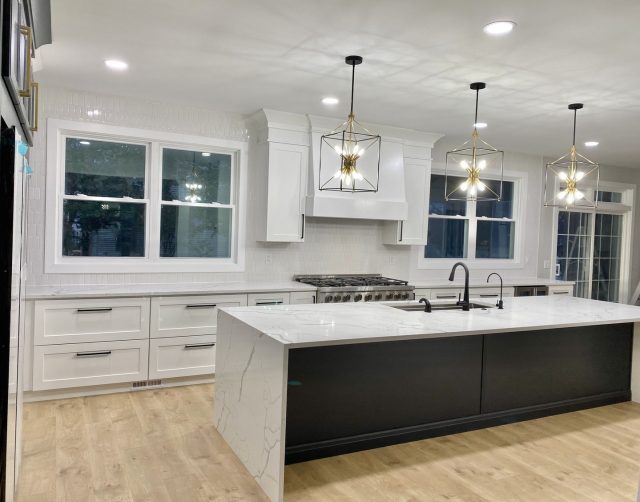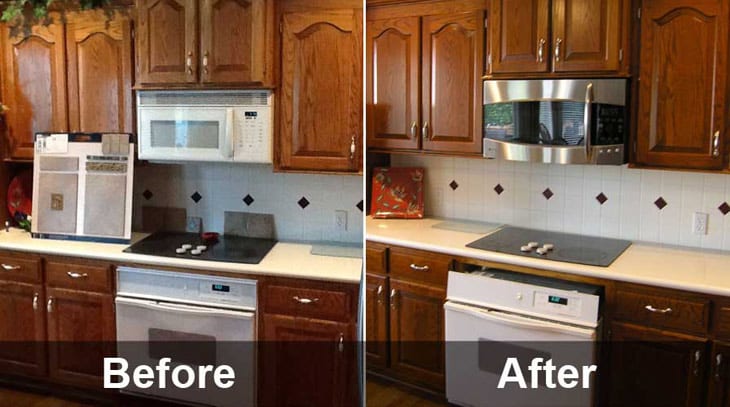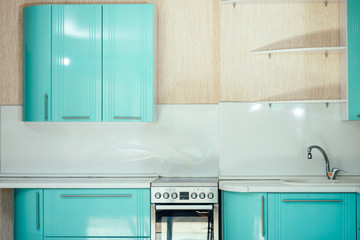Cabinet refinishing is a great way to give your kitchen a fresh new look. It is also a cost-effective option for hiding minor imperfections.
The refinishing process is simple but requires the expertise of an experienced refinisher. Typically, you can refinish your cabinet doors by painting or staining them.
The preparation process is one of the most important steps for cabinet refinishing, and it can make all the difference in the final results. Failure to prepare your cabinets properly can result in a finish that is unattractive or not durable enough to last.
A good prep job will remove any previous stains and repairs to ensure the new finish is properly adhered. This can help avoid sanding and resanding the surface over and over again.
For this step, sand your cabinets down with a medium-grit sanding sponge or 180-grit sandpaper on an orbital sander. This will create a rough surface that the primer will adhere to and give it something to hold onto.
Once you’ve sanded the surfaces completely, clean the cabinets with a shop vac and tack cloth to remove any remaining dust particles. You don’t want any dust to remain on the cabinet when it’s refinished, as this can cause the paint to chip off.
During this step, it’s also important to keep your work area well ventilated. Use a box fan or open windows to keep the air flowing and prevent your cabinet surfaces from getting too hot.
Another precaution to take is to wear protective clothing, such as a mask, when working with chemicals or sanding. Many of the chemicals used in kitchen cabinet refinishing are toxic, so wearing the proper safety gear is necessary for your health and safety.
Refinishing a set of cabinets can be an easy and cost-effective way to update the look of your kitchen or bathroom. The refinishing process can include painting or staining the cabinets, and it can even involve applying a laminate veneer to the cabinet exteriors.
Refinishing cabinets involves removing the old finish and applying a new one. The process can be time-consuming, and the amount of work required depends on the degree to which you want to change the look of your kitchen.
Before you start stripping the paint from your cabinets, prepare a clean work area and get all of the necessary materials you need to perform this job. This includes rubber gloves, a long-sleeved work shirt, and a respirator, which will all help keep you safe while you work.
Once your work area is ready, apply a thin coat of the paint remover to the face of each cabinet, drawer, and door. Wait 10 minutes, and then scrape it off with a putty knife.
Repeat this process on each cabinet, drawer, and door until all of the old paint has been removed. You can then sand the surfaces to a smooth finish.
The stripping and sanding process can take several hours to complete. This is especially true for cabinets that are oversized or have ornate trim and windows.
Despite this, stripping and sanding can be an effective way to update your cabinets. It’s also a good option if your cabinets have a stained finish that isn’t giving you the results you’re looking for.
It’s a good idea to hire a professional for cabinet refinishing. They will know how to sand and paint properly, and they can give you the best results. They will also be able to make adjustments to your cabinet doors and hinges. If your cabinets have a stain finish, they will be able to give you a better choice of colors. They can also refinish your hinges so that they’ll open and close as smoothly as they did before.





